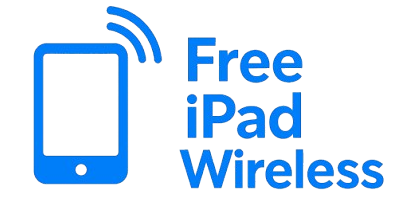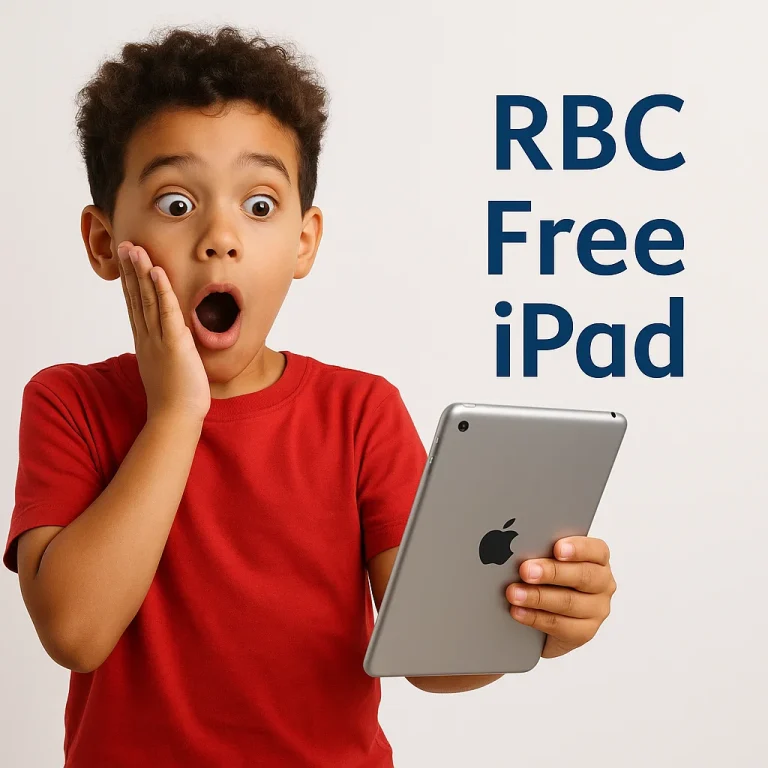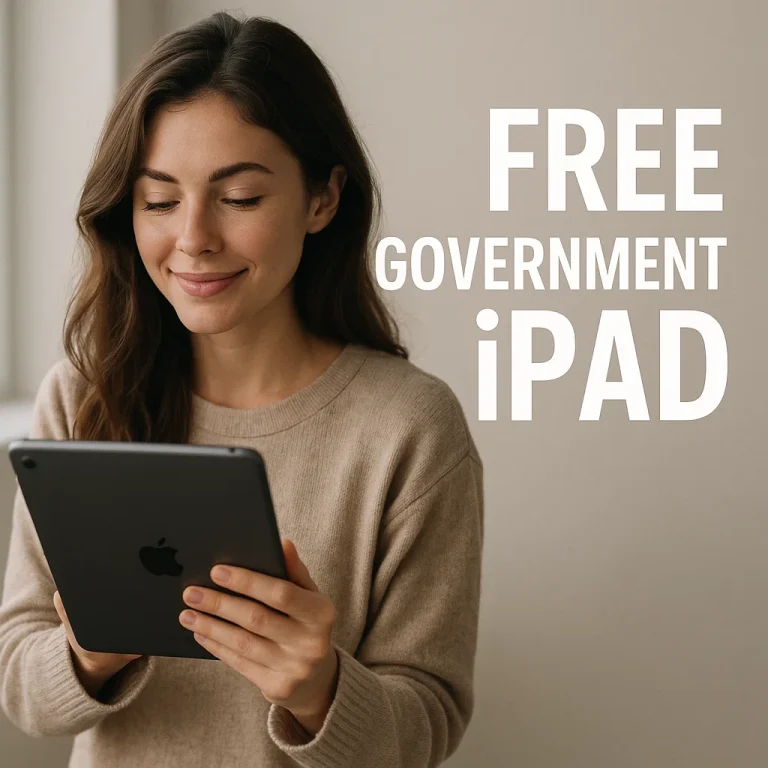Millions of low-income Americans receive benefits via EBT (the card system for SNAP food stamps). These families often face a “digital divide”: many struggle to afford internet or devices. To help, the federal government offers programs that turn SNAP eligibility into tech aid. For example, being on SNAP automatically qualifies you for the Lifeline phone/internet discount program. (Historically, the Affordable Connectivity Program – ACP – also used SNAP eligibility, but that ended in June 2024.) These programs can allow qualifying households to get devices like tablets or iPads at little or no cost.
Federal Programs Offering Free Tablets or iPads
Lifeline (Ongoing): The Lifeline program provides a monthly subsidy (up to $9.25, or $34.25 on Tribal lands) toward phone or internet service. Any household with SNAP/EBT (or Medicaid, SSI, etc.) or income at 135% of poverty or below qualifies. Lifeline itself does not guarantee a free device, but many participating providers offer promotional devices. In some states, new Lifeline customers may receive a free smartphone or tablet when they sign up. Note: “Not all providers offer a free tablet or device when you sign up” – only some participating carriers do. (Always sign up through the official Lifeline portal or known providers to avoid scams.)

ACP (Historical): The Affordable Connectivity Program was a one-year benefit that gave eligible households up to $30/month toward broadband and a one-time discount on a device. Qualified households (income ≤200% of poverty or on SNAP, Medicaid, WIC, Pell grants, etc.) could get up to a $100 rebate toward a computer or tablet. Many ACP providers offered basic tablets (sometimes Android or Chromebook tablets) for a small co-pay ($10–$50) under this benefit. However, ACP ended June 1, 2024. Thus the only current federal benefit is Lifeline, which mainly subsidizes service (though some Lifeline plans still include a free device offer).
State-Level Initiatives and Examples
Several states supplement or implement these federal programs and add their own digital access initiatives:
- California: California runs its own California LifeLine program, offering telephone/internet discounts to low-income households. The state also promoted the ACP device discount (up to $100 off a laptop/tablet) before it expired. California’s Lifeline benefit, for example, can reach $19/month off internet or phone service.
- Maine: Maine’s digital equity plan includes public connectivity hubs (in libraries, community centers, etc.) with free Wi-Fi and device lending programs. These hubs “provide… access to affordable devices for public use and lending programs” to support education and telehealth.
- District of Columbia (DC): DC is setting up neighborhood “tech hubs” that offer free high-speed Wi-Fi, internet-connected devices, and training by digital navigators. These centers will provide device lending and help residents get online.
- Colorado: Colorado funds Digital Navigators who meet people in their communities to help them get connected. These navigators assist households in signing up for programs like Lifeline/ACP and in obtaining “low- or no-cost devices”. (They work with SNAP recipients to access affordable internet and free tablets or laptops.)
Other states have similar efforts (digital equity coalitions, broadband offices, library lending programs, etc.) that benefit SNAP families, but specifics vary locally. In general, if you live in a state-run program or have a community non-profit, they may have additional device giveaways or loaner programs – check your state’s broadband office or public assistance agency for details.
Eligibility Criteria
To qualify for Lifeline or ACP device discounts, households generally must meet income or program tests:
- Lifeline: You qualify if your income is at or below 135% of the federal poverty level or if someone in your household participates in a federal assistance program (SNAP, Medicaid, SSI, Federal Public Housing, etc.). Practically, SNAP/EBT recipients automatically qualify for Lifeline.
- ACP (when it was active): Households qualified with income ≤200% of poverty, or participation in certain programs (including SNAP, Medicaid, SSI, WIC, Pell grants). (ACP allowed one device discount per household.)
For most states, only one Lifeline discount (for one phone or internet plan) is allowed per household. Households that share finances (married couples, parents and dependents, etc.) count as one household for Lifeline. Also note: if you have Medicaid or other benefits instead of SNAP, you still qualify under the same rules.
Step-by-Step Application Process
- Check eligibility. Confirm that someone in your household is on SNAP/EBT (or another qualifying benefit) or that your income meets the criteria. You can review Lifeline and ACP guidelines on the official Universal Service websites. Apply here.
- Gather required documents. As below, you’ll need proof of your program status and identity.
- Create a Lifeline application. Go to the Lifeline sign-up portal (e.g. getinternet.gov) or contact a participating provider. Create an account and begin an application.
- Provide personal info and proofs. You will enter your full name, date of birth, Social Security number (or last 4 digits), and home address. Then upload or mail the documents (proof of SNAP/benefit, ID, address). (See next section for details.)
- Submit and wait for approval. The Lifeline administrator (USAC) will verify your eligibility. This often takes a few weeks. Once approved, you choose a provider’s plan and the Lifeline discount will appear on your monthly bill. (In many states, you’ll see the Lifeline credit on your phone or internet bill within a month after approval.)
For ACP (historically), you would apply through affordableconnectivity.gov or through an internet provider. The process was similar: apply, verify eligibility, and then select a service plan that qualifies for the device discount.
Required Documents
When applying, proof of eligibility is essential. You typically need:
- Benefit letter: An official document (award or approval letter) from your SNAP/EBT or other program, showing your name and program participation. (EBT cards alone are not sufficient proof – you usually need the corresponding award letter.)
- Photo ID: A government-issued photo ID (such as a driver’s license, state ID, or passport) in your name.
- Proof of address: A recent document showing your name and physical address. Acceptable proofs include a utility bill, lease/mortgage statement, W-2 or tax return, or even your driver’s license.
- Social Security/Tribal ID: You’ll need to provide the last four digits of your SSN or a Tribal ID number (often through the ID or benefit letter).
The Lifeline support site notes that an eligibility letter “must include your name or dependent’s name, the program name (such as SNAP), and the issuing agency”. Keep copies of all documents. If anything isn’t immediately available, your SNAP office or local assistance agency can often reissue a benefit letter.
Benefits of Receiving a Free iPad
Getting a free or discounted tablet/iPad through iPad Wireless can have a huge impact on a SNAP household:
- Education: A tablet gives children a way to do homework, attend online classes, and use educational apps. In one survey, 21% of low-income parents said their child likely couldn’t complete schoolwork at home without a computer. An iPad helps close that “homework gap.”
- Employment and Training: Many job applications, online courses, and work resources require internet access. Yet roughly half of low-income families struggle to pay for internet service. A free tablet (with an internet plan) enables parents to search/apply for jobs, take online classes, and improve digital skills. As one report notes, access to the internet is now “what access to electricity was… a necessity for modern living”.
- Healthcare and Services: Tablets enable telemedicine visits, online appointments, and access to health information. They also help families apply for social benefits, manage banking and bills, and take advantage of online community resources without needing to travel.
- Social Connectivity: An iPad lets people video-chat with family, friends, or caseworkers. For isolated seniors or disabled household members, it’s a vital link. Overall, a connected device increases access to information and reduces isolation for low-income families.
In short, a free tablet opens up critical opportunities for work, school, health care, and communication that SNAP households might otherwise miss.
Common Questions or Concerns
Can I buy an iPad directly with my EBT card?
No. SNAP EBT can be used only for food and groceries. You cannot purchase electronics with SNAP benefits. Instead, being on SNAP lets you qualify for programs (like Lifeline/ACP) that can provide a free or discounted device.
Is the iPad really free?
Lifeline itself is a subsidy on service; devices (like phones) from Lifeline providers are often free. Under ACP, eligible households got a up-to-$100 voucher toward a tablet. This typically meant picking a provider’s tablet and paying a small co-pay ($10–$50) for the device. Other plans might include the device cost. Read the fine print: in almost all cases, any “free” tablet comes with a required service plan or a minimal fee.
If I have Medicaid or other benefits (not SNAP), do I still qualify?
Yes. Participating in Medicaid, SSI, TANF, or other programs also makes you eligible for Lifeline/ACP. The key is low income or government aid – SNAP is just the most common case.
What documents will I actually need on hand?
As above: you’ll usually show a recent benefit letter from SNAP or Medicaid (with your name), a photo ID (like a driver’s license), and proof of residence (like a utility bill or lease). If needed, a short application may ask for the last four of your SSN.
How long does it take to get the iPad?
After you apply and are approved (which can take a few weeks), you’ll sign up with a participating provider for your Lifeline/ACP service plan. The provider will ship the tablet to you. Depending on inventory, this can be a few days to several weeks.
How often must I renew my benefits?
Lifeline benefits must be recertified at least once a year. If you don’t confirm your eligibility when asked (typically every 12 months), your benefit will be cut off. (ACP was a one-time benefit and did not renew annually.) So mark your calendar to verify your status each year.
Are there scams or pitfalls to avoid?
Yes. Only sign up through the official Lifeline/ACP website or by contacting a certified provider. Beware of ads or calls promising “free iPad for SNAP households” – they may be phishing for your EBT account. As one consumer guide cautions, “be vigilant of scams that claim to give free tablets for SNAP participants”. Stick with known, legitimate programs (the FCC Lifeline portal and reputable ISPs) to get your device safely.
Conclusion
In summary, while you cannot swipe your EBT card at an electronics store, SNAP status does unlock valuable tech resources. By enrolling in Lifeline (and, when it was available, ACP), eligible households can obtain free or low-cost tablets to help bridge the digital divide. Always check current program details in your state, gather the necessary documents, and apply through official channels to get the most reliable information and service


